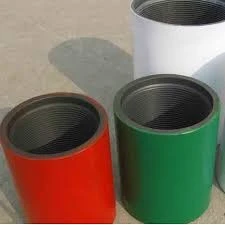- Afrikaans
- Albanian
- Amharic
- Arabic
- Armenian
- Azerbaijani
- Basque
- Belarusian
- Bengali
- Bosnian
- Bulgarian
- Catalan
- Cebuano
- Corsican
- Croatian
- Czech
- Danish
- Dutch
- English
- Esperanto
- Estonian
- Finnish
- French
- Frisian
- Galician
- Georgian
- German
- Greek
- Gujarati
- Haitian Creole
- hausa
- hawaiian
- Hebrew
- Hindi
- Miao
- Hungarian
- Icelandic
- igbo
- Indonesian
- irish
- Italian
- Japanese
- Javanese
- Kannada
- kazakh
- Khmer
- Rwandese
- Korean
- Kurdish
- Kyrgyz
- Lao
- Latin
- Latvian
- Lithuanian
- Luxembourgish
- Macedonian
- Malgashi
- Malay
- Malayalam
- Maltese
- Maori
- Marathi
- Mongolian
- Myanmar
- Nepali
- Norwegian
- Norwegian
- Occitan
- Pashto
- Persian
- Polish
- Portuguese
- Punjabi
- Romanian
- Russian
- Samoan
- Scottish Gaelic
- Serbian
- Sesotho
- Shona
- Sindhi
- Sinhala
- Slovak
- Slovenian
- Somali
- Spanish
- Sundanese
- Swahili
- Swedish
- Tagalog
- Tajik
- Tamil
- Tatar
- Telugu
- Thai
- Turkish
- Turkmen
- Ukrainian
- Urdu
- Uighur
- Uzbek
- Vietnamese
- Welsh
- Bantu
- Yiddish
- Yoruba
- Zulu
api casing sizes
Understanding API Casing Sizes in the Oil and Gas Industry
The oil and gas industry relies heavily on the standardization of equipment and materials to ensure efficiency, safety, and compatibility in various applications. One of the critical components in drilling operations is casing, which serves to protect the wellbore, provide structural integrity, and prevent fluid migration among geological formations. Following the specifications set by the American Petroleum Institute (API) is essential, especially when it comes to understanding casing sizes.
API casing sizes are standardized to facilitate uniformity and interoperability across different projects and regions. They cover a range of diameters, thicknesses, and lengths to cater to various drilling conditions and requirements. The standard API casing sizes are denoted by their nominal diameter (in inches) followed by the weight in pounds per foot (lbs/ft). For example, a casing labeled as 5-1/2 × 20 lb/ft indicates that it has a nominal diameter of 5.5 inches and weighs 20 pounds per foot.
Types of Casing
Casing can be categorized into several types, each designed for specific functions and conditions
1. Surface Casing This is the first string of casing installed in the well. Its primary purpose is to protect freshwater aquifers and stabilize the well. The surface casing is typically larger than subsequent casings and is cemented into place.
2. Intermediate Casing Installed after the surface casing, intermediate casing is used to isolate different pressure zones and provide additional support to the well structure. The size and weight of intermediate casing are critical to withstand the pressures encountered during drilling.
3. Production Casing This casing is installed after the completion of the well and is used to facilitate the production of oil or gas. The casing size is determined by the requirements for effective production, pressure control, and the specific characteristics of the reservoir.
api casing sizes

4. Liner Casing Liner casing is used to further enhance the integrity of the wellbore but is not anchored to the surface like standard casing. Instead, it extends from a point within the well to the bottom. Liners are particularly useful in long, deep wells where full casing may not be necessary.
API Casing Size Standards
The API has established various standards (API Spec 5CT and API Spec 5B) that stipulate the dimensions and properties of casing materials, including their minimum yield strength, corrosion resistance, and connection types. Casing sizes typically range from 4.5 inches to 20 inches in diameter, with weights varying widely to meet operational demands. Moreover, casing specifications also include details on the grade of steel, which affects the casing's strength and durability.
Impact of Casing Sizes on Operations
The selection of proper casing size is essential for the longevity and success of drilling operations. A casing that is too small might not withstand the pressures and stresses of the subsurface environment, leading to potential failures. Conversely, oversized casing can unnecessarily increase costs and complicate drilling logistics.
Conclusion
With the heightened demands placed on the oil and gas industry, understanding API casing sizes and their appropriate applications is more critical than ever. A well-thought-out choice of casing sizes not only optimizes drilling operations but also enhances safety and environmental protection. As technology continues to evolve, staying abreast of changes in API standards and practices ensures that operators can efficiently adapt to new challenges in this ever-changing field. By investing in the proper casing sizes and materials, companies can achieve operational excellence while maintaining a commitment to safety and environmental stewardship.
-
Tubing Pup Joints: Essential Components for Oil and Gas OperationsNewsJul.10,2025
-
Pup Joints: Essential Components for Reliable Drilling OperationsNewsJul.10,2025
-
Pipe Couplings: Connecting Your World EfficientlyNewsJul.10,2025
-
Mastering Oilfield Operations with Quality Tubing and CasingNewsJul.10,2025
-
High-Quality Casing Couplings for Every NeedNewsJul.10,2025
-
Boost Your Drilling Efficiency with Premium Crossover Tools & Seating NipplesNewsJul.10,2025







